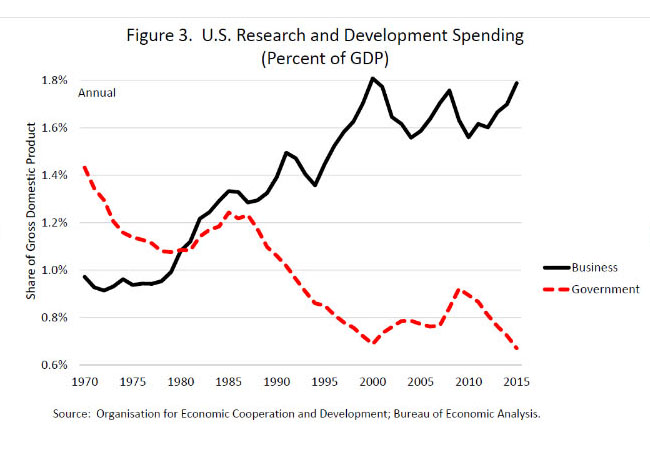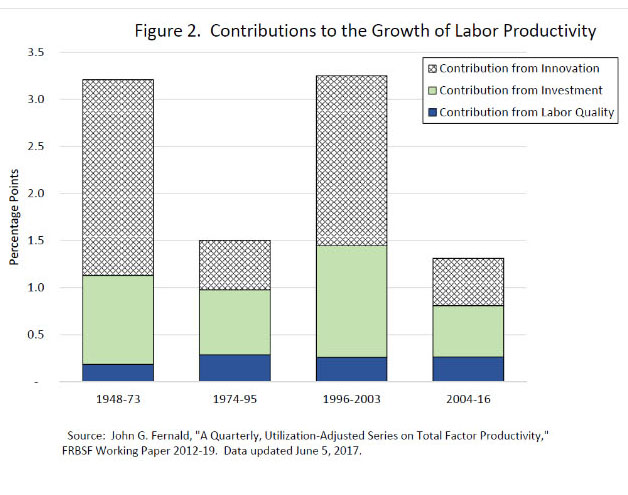Lael Brainard: Status Quo Not Good Enough
Last Friday, Fed Governor Lael Brainard addressed trainees attending the 20th annual summer program intended to advance diversity in the economics profession, a demanding and often lonesome trail. The program takes place at Michigan State U in East Lansing, and is sponsored by the American Economic Association and the National Science Foundation.
Brainard notes that, “Between 1995 and 2014, the share of women obtaining a doctorate in economics held roughly steady in the neighborhood of 30 percent. Among U.S. citizens and permanent residents earning doctorates, the representation of those identifying as black, Hispanic, or Native American among the pool of doctorate recipients improved from 6 percent in 1995 to 11 percent in 2007. But the improvement has since unwound and the underrepresented minority share stood at about 7 percent in 2014.” [This is at odds with progress in the other STEM professions.]
The idea that broadening diversity and opportunity is the right thing to do sometimes obscures the truth that it is best practice. As Brainard put it, “The quality of the economics profession and its contributions to society will be stronger when a broader range of people are engaged…. We now have substantial empirical evidence documenting the benefits of diversity in broadening the range of ideas and perspectives that are brought to bear on solving problems.”
If you’re a hard-nosed pragmatist interested only in results, perhaps you already knew this.
Here’s some of that evidence, accessed through Brainard’s footnotes, as well as some possible reasons and suggestions.
“Ethnic diversity deflates price bubbles,” tested the authors’ conjecture that bubbles can be thwarted by ethnic diversity. Looking at markets in Singapore and in Texas, they found that traders in homogenous markets are more likely to accept speculative prices, their errors are more tightly correlated, and when the markets crash they do so with a bigger bang than more diverse markets, where prices fit true value 58% more accurately.
A McKinsey study found that companies ranked in the top quarter by ethnic and racial diversity are 35% more likely to beat national industry means in financial returns, and companies ranked in the top quarter by gender diversity 15% more likely to do so. Companies in the bottom quarter are less likely than the average to produce above average returns, and therefore are not just not leading, they are dragging. This unequal performance suggests that diversity is a competitive differentiator.
And Credit Suisse reports that large-cap companies with at least one woman on the board have outperformed their peers who have no women on the board by 26% in the 6 years leading into 2012. That’s a bit of an old study. Perhaps it’s no longer true that there are large-caps that have no women on their boards.
And, the last word in stark…
Another Personality and Social Psychology study involved 3-person teams taken from the same fraternity or sorority house and tasked with solving a murder. Each “detective” worked independently to identify the most likely suspect and then joined up to provide a collective answer. A few minutes into the discussion the Greek groups were joined either by another member of their house or by an outsider. After turning in their answers, the more diverse groups thought their interactions were less effective than the homogenous teams, and were less confident in their conclusions.
But they were “starkly” wrong. The addition of an outsider doubled the teams’ chances of getting the correct answer, from 29% to 60%.
Tough is good
David Rock, Heidi Grant and Jacqui Grey, who wrote the HBR mentioned directly above, believe that working with people who are different from ourselves challenges our brains to overcome our “stale ways of thinking.”
The discomfort that caused the more diverse teams to feel less confident when they should have been more is the point: such difficulty improves the outcome and sharpens thinking. The authors cite a study carried out in mock juries where white jurors processed the facts of the case more carefully when blacks were added to the juries. So…
Why so slow?
In their, “Diversity in the Economics Profession: A New Attack on an Old Problem.” Amanda Bayer, Professor of Economics at Swarthmore, and Cecilia Rouse, Dean of the Wilson School of Public and International Affairs at Princeton, quickly get to some possible reasons for our lack of success in diversifying the economics profession, spotlighting evidence that “may be less familiar to economists,” than the problem itself.
Although many hypotheses advance math prep, instructor race/gender, past experience in economics as the culprits, it is hard to get to a conclusion. One team looked at a dataset for 11 large state universities and found that an array of variables, including aptitude, do not explain the disparity in going beyond that first intro economics course.
(We have an anecdote here. Coincidentally, one of us spoke with a college sophomore the other day. She had taken one economics course and passed on the second: the tenets that were taught did not fit with her own experience, and when she, therefore, questioned their validity, the professor’s answers did not convince her. She’s a chemistry/physics major, so it’s unlikely it was an aptitude issue. The conversation at the table was about economic issues, and she kept up with the grown-ups handily, but after that one class she had lost interest in the academic side.)
Other STEM fields are far more diverse: One study that found “no significant sex differences” in promotion of professors in fields with heavy math requirements, labeled economics an “outlier with a persistent sex gap that can’t be explained by productivity differences.” And, in 2014, women earned 43% of degrees in math and statistics, well above that 30% in economics.
Although implicit bias research has not been targeted to economics, the authors cite a study of economics professors up for tenure at the 30-top universities between 1975 and 2014. The study showed that while an additional co-authored paper has the same effect on a man’s chances of attaining tenure as does a paper he published on his own, women are penalized for co-authoring, especially if the co-author is male.
As an example of how deep such bias runs they note that in the business sector, a serious offender, identical research queries were sent under names designed to telegraph that the sender was Caucasian, African-American, Hispanic, Indian or Chinese. Eighty-seven percent of the “white” males received responses; only 62% of the others heard back. It seems unlikely that economics is not similarly plagued.
Let’s move on to some of the less-known possibilities. One unintended effect might be that economists generally don’t put together programs that would make the field more inclusive to under-represented populations. Bayer and Rouse wonder how much we can trust economists, who so often frame choices as “individual objective decision-making,” to police themselves for discrimination? In one role-playing experiment, men who thought of themselves as “objective and logical” were more likely to favor male applicants.
And it probably doesn’t help that salaries of female full-professors fell from 95% of those of males in 1995 to 75% in 2010.
Creative destruction to the rescue
Bayer and Rouse advance some concrete approaches. First and foremost they believe we need to revise how economics is taught. In recent years, the lecture has repeatedly been shown to be “inferior” to other teaching strategies, and yet it remains dominant.
Bayer and Rouse suggest professors adopt an ask rather than tell approach. This won’t bog down intro courses as students can use clickers to respond to questions quickly. Also, we could use more in-class experiments and labs, again rather than relying on lectures. Such active learning is all good in terms of higher scores and lower failure rates. And maybe those more diverse teams could come up with some better answers to those old economic questions we’re grappling with these days.
On the draw side, there’s attention to recruitment and mentoring programs, and abatement of bias and discrimination. Small changes can do a lot in things: balancing the number of women and minorities shown in class materials reduces stereotype threat. The Harvard study stresses that it’s better to be direct: acknowledging that differences exist and diversity is valued is far more effective than those somewhat humorous mock-ups that show one of every known stereotype beaming in unison. It’s also a good idea to wait a few seconds after asking a question so that the first students to raise their hands are not always the ones to answer questions. That way the more reticent students also have the important experience of public speaking.
Other small things include listening, encouraging, and giving credit to others for their ideas. What a concept.






Inflation, that dog just won’t bark
We are happy to report that Hale Stewart will be contributing to our blog going forward. Here’s a longer look from him, with an assist from the St. Louis Fed, at pricing trends.
Friday’s inflation report was, yet again, underwhelming, further confirming that upward price pressures are contained. Core and overall CPI are 1.7% Y/Y:
Both measures are below the Federal Reserve’s 2% inflation target. Core (in blue) was slightly above 2% for most of 2016 while total CPI (in red) was rising. But its increase did not influence overall CPI, indicating that commodity pressures are weak. Although they are part of the misery index, neither food nor energy prices should concern us in terms of sticky inflation:
The top chart shows the year Y/Y percentage change in food and beverage prices, which were declining from the beginning of 2015 to 3Q2016. They are now increasing, but are only slightly above 1%. The bottom chart shows energy prices which were negative for approximately two years, turning positive at the beginning of 2017. Yes, they did spike to about 15%, but that’s as much a function of statistics as the marketplace activity. Now they are quickly declining. Just as importantly, food and beverage prices are only 13.63% of CPI while energy prices are 7.35%, meaning both would have to increase at sharply faster rates for an extended period time for us to be concerned.
Energy and food prices are the only commodity prices adding to CPI:
All commodities less these two items have subtracted from CPI for over four years. This sub-index of overall CPI accounts for 18.95% of CPI. Its negative contributions counterbalance any upward pressure from food and energy prices.
Finally, we have the sub-index for services less energy:
This was between 3%-3.2% for most of 2016, but has since decreased sharply. The underlying reasons for this spike have dissipated.
Readers sometimes suggest we adjust spending measures, like retail sales, for certain segments’ own personal deflation in order to show that spending is actually quite strong. That gets a “Huh?” from us. If spending were strong, prices would be floating up. The point is that they are not.